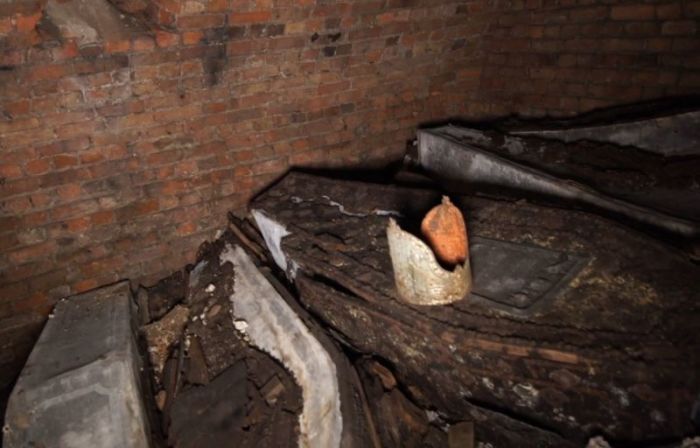Missing Coffin of Archbishop Who Oversaw Publication of King James Bible Found Under Church (Video)

The "spine-tingling" discovery of the remains of five archbishops of Canterbury, including one who oversaw the publication of the King James Bible in 1611, has been made beneath a medieval parish church next to Lambeth Palace in the U.K.
The Garden Museum reported on Sunday that a cache of 30 lead coffins that had been undisturbed for centuries was found last year during a refurbishment project, with a closer inspection now revealing the metal plates bearing the names of five former leaders of the Church of England.
"This is a discovery of exceptional interest, and will be a new story in the interpretation of the Church of St Mary's-at-Lambeth, in which the Museum is housed," the Museum said in a statement.
Christopher Woodward, director of the Garden Museum, added: "I knew there had been 20,000 bodies buried in the churchyard. But I thought the burial places had been cleared from the nave and aisles, and the vaults under the church had been filled with earth."
The Telegraph, which described the view of the archbishops' coffins as "spine-tingling" and "astonishing," noted that the most important of all the finds was the coffin of Richard Bancroft, the Archbishop of Canterbury from 1604 to 1610.
Bancroft is credited with overseeing the first ever publication of the King James Bible, which began in 1604, and was published in 1611, one year after this death.
"Archbishop Bancroft was chosen by King James I to put together a new English translation of the Bible," Woodward explained. "He didn't write it, of course, but he made it happen, and the words he forced into print still ring out across a thousand churchyards every Sunday morning. It feels very precious to have his coffin as cargo in our hold."
Wesley Kerr, chair of the Heritage Lottery Fund from 2007 to 2014, added: "This is really astonishing — this is one of the most incredible things I've seen. ... To know that possibly the person that commissioned the King James Bible is buried here is the most incredible discovery and greatly adds to the texture of this project."
It had previously been believed that St Mary-at-Lambeth, the Anglo-Saxon church built in 1062, had lost the coffins of the archbishops, which were buried there between the 17th and 19th centuries, after it had to be almost entirely rebuild in 1851.
Site manager Karl Patten, from the building contractors Rooff, explained that his team was lifting the flagstones in the church when they discovered an entry into an underground tomb.
They used mobile phone cameras to search the void, BBC News noted, which was when they first saw the coffins.
"Wow, it was the crown — it's the mitre of an archbishop, glowing in the dark," Woodward shared of his first impressions upon taking a look at the images.
The coffins were apparently stacked on top of each other in a brick-lined vault, with the red and gold mitre, or bishop's head-dress, resting on top of one of the coffins.
St Mary-at-Lambeth's records have shown that the other four archbishops buried there include John Moore (in office 1783 to 1805), Frederick Cornwallis (1768 to 1783), Matthew Hutton (1757 to 1758), and Thomas Tenison (1695 to 1715).
Other important figures were also apparently laid to rest in the vault, including the Dean of Arches John Bettesworth, who lived from 1677 to 1751, and was a judge who sat at the ecclesiastical court of the Archbishop of Canterbury.
Woodward said that the site may hold other mysteries as well.
"This church had two lives: it was the parish church of Lambeth, this little village by the river ... but it was also a kind of annex to Lambeth Palace itself," the Garden Museum director said.
"And over the centuries a significant number of the archbishops' families and archbishops themselves chose to worship here, and chose to be buried here."
Watch the Garden Museum's video of the discovery:









